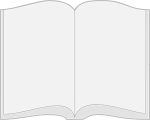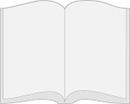|
Book
|  | PRICE GUIDE ? Add Valuation | ||||||||||||||||||||||||||||
Notes
the elmfield press (title page, dust-jacket front flap)
a morley book published by the elmfield press (base of spine, dust-jacket spine)
isbn 0 7057 023 2
a morley book published 1973 by
the elmfield press, elmfield road, morley, yorkshire ls27 0nn (uk)
in association with shire publications ltd.
printed in england by eyre & spottiswoode ltd, thanet press, margate (uk)
4 unnumbered pp titles, indica, +167 + 1 blank = 172pp
sewn in signatures and bound in red cloth between boards, title, author, elmfield press colophon & "a morley book" gold blocked on spine
full colour-printed white paper dust-jacket,
cover art by josh kirby extends onto what may be pre-faded spine
cover price £2.60 on base of front dust-jacket flap, below the isbn & "the elmfield press"
Comments and Reviews
| JimEss SUBS 14th Nov 2022 | Added the covers. (this comment is from another edition of this book) | |
| ppint. 2nd Apr 2021 | simultaneous near-identical ballantine books printings sharing merkin-printed covers, first edition cover art by gene szafran (signed szafran) cover price$1.25 224pp? including titles, indica etc, end pp. advertising refer to indica printing history to see if carcass of copy held was canadadian- or merkin- printed no priority established nor liable to be, both state first printing: january, 1973 (this comment is from another edition of this book) | |
| ppint. 16th Jan 2019 | (some authorities - and even some dictionaries - get this wrong, so:) syzygy is a quality that inheres, or may from time-to-time inhere, in a system of three or more than three objects that is, at least in theory, capable of forming or being formed up into different configurations or alignments: but it is not a configuration, nor an alignment. a system exhibits syzygy (or, "is syzygous") when its components are aligned in a straight line, or sometimes when its components are aligned upon straight lines parallel with one another, when no single unique line of alignment is possible (and perhaps, even should one be possible). the derivation from the ancient greek, "sun zugon" (where upsilon -> "y"), "with or by yoke", refers to the ways draught or ploughing animals may be yoked together: this would normally be with the animals all pointing in the same direction, of course, but does allow for some of them to be pointed in opposing directions: they remain oriented upon the same line, or set of parallel lines. in the simplest example, the ploughman or woman and two draught animals are the three elements who must all be pointed upon one line (or more parallel lines), for it to be syzygous. (having the two draught animals facing in the same direction is of course normal, even sensible, but is not technically required by the use of a yoke. . .) astronomically, lunar or solar systems exhibit their greatest degree of syzygy when all of their components (planet and moons, or sun and planets - or even sun, planets and moons) lie upon a straight line; this maximises e.g. their combined tidal effects upon one another - whether they all lie upon the same side of the system's primary, or are distributed to either side of it. (- more than you ever wished to know about syzygy. . . ;-)) ) (this comment is from another edition of this book) | |
Add a Comment or Review about this book
Other Editions
 Book
BookMichael G. Coney - Syzygy - Arrow - Paperback - UK - 0099110202 (1975)
 Book
BookMichael G. Coney - Syzygy - Ballantine Books - Paperback - USA (1973)
See Also
 BookMichael G. Coney - Mirror Image - Victor Gollancz - Hardcover - UK - 0575017260 (1973)
BookMichael G. Coney - Mirror Image - Victor Gollancz - Hardcover - UK - 0575017260 (1973)Next by Author
 BookMichael G. Coney - Mirror Image - Daw - Paperback - USA (1972)
BookMichael G. Coney - Mirror Image - Daw - Paperback - USA (1972)Previous by Author
 BookJohn Brunner - Times Without Number - The Elmfield Press - Hardcover - UK - 0705700429 (1974)
BookJohn Brunner - Times Without Number - The Elmfield Press - Hardcover - UK - 0705700429 (1974)Next by Publisher
Tags: josh kirby
This Book: Price Guide : Add Valuation : Add Image : Add Video : Add Missing Info : Make Correction : Add to List : Add See Also : Add Tag : Credits : BBCode
45worlds website ©2025 :
Homepage :
Search :
Sitemap :
Help Page :
Privacy :
Terms :
Contact :
Share This Page
Vinyl Albums : Live Music : 78 RPM : CD Albums : CD Singles : 12" Singles : 7" Singles : Tape Media : Classical Music : Music Memorabilia : Cinema : TV Series : DVD & Blu-ray : Magazines : Books : Video Games : Create Your Own World
Latest » Items : Comments : Price Guide : Reviews : Ratings : Images : Lists : Videos : Tags : Collected : Wanted : Top 50 : Random
45cat for 7" singles : 45worlds for music, movies, books etc : 45spaces for hundreds more worlds
:
Like us on Facebook
Vinyl Albums : Live Music : 78 RPM : CD Albums : CD Singles : 12" Singles : 7" Singles : Tape Media : Classical Music : Music Memorabilia : Cinema : TV Series : DVD & Blu-ray : Magazines : Books : Video Games : Create Your Own World
Latest » Items : Comments : Price Guide : Reviews : Ratings : Images : Lists : Videos : Tags : Collected : Wanted : Top 50 : Random
45cat for 7" singles : 45worlds for music, movies, books etc : 45spaces for hundreds more worlds
